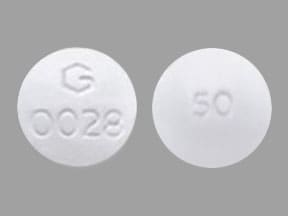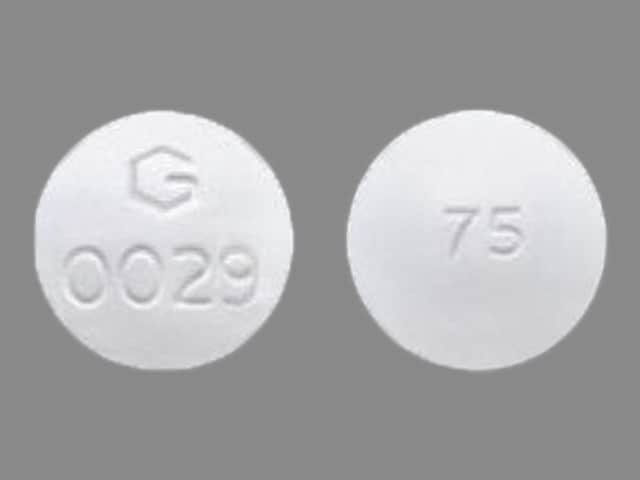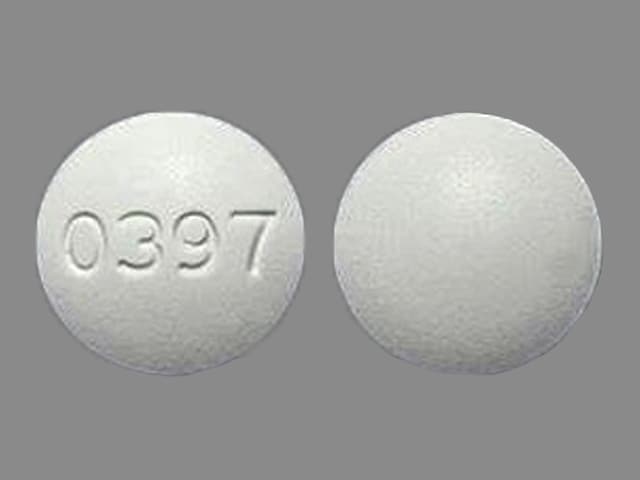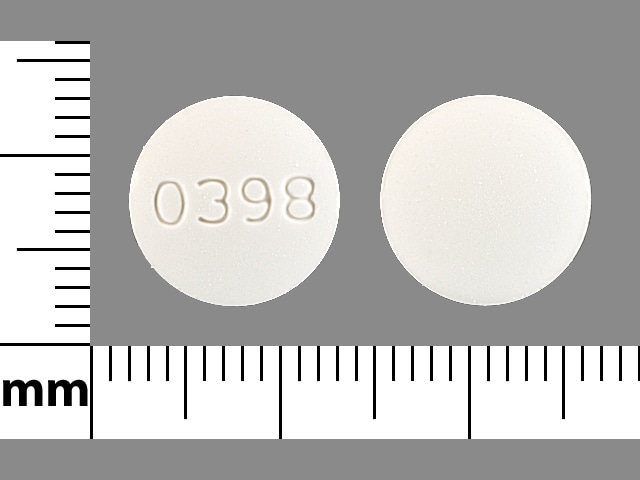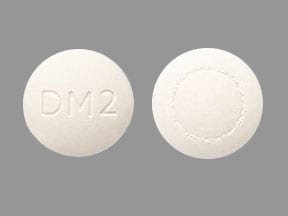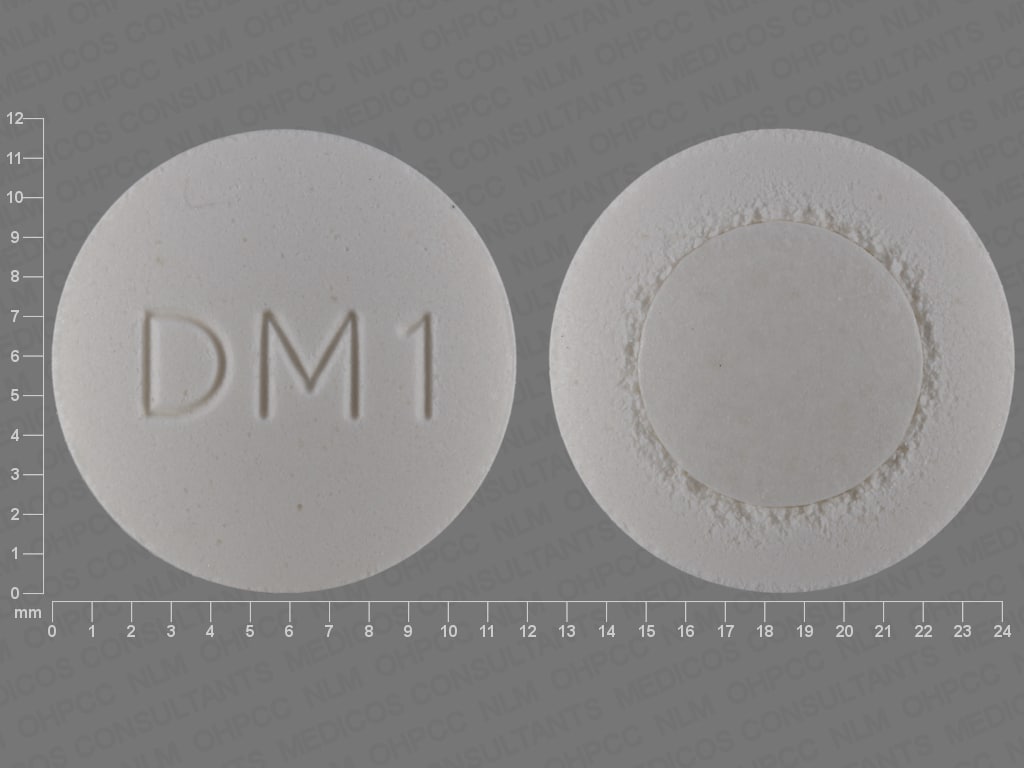Boxed Warning
Pregnancy:
This product contains diclofenac and misoprostol. The administration of misoprostol to women who are pregnant can cause abortion, premature birth, or birth defects.
Uterine rupture has been reported when misoprostol was administered to pregnant women to induce labor or to induce abortion beyond the eighth week of pregnancy. Diclofenac/misoprostol should not be taken by pregnant women.
Advise patients of the abortifacient property and warn them not to give the drug to others. Do not use in women of childbearing potential unless the patient requires nonsteroidal anti-inflammatory drug (NSAID) therapy and is at high risk of developing gastric or duodenal ulceration or of developing complications from gastric or duodenal ulcers associated with the use of the NSAID. In such patients, this drug may be prescribed if the patient:
- had a negative serum pregnancy test within 2 weeks prior to beginning therapy;
- is capable of complying with effective contraceptive measures;
- has received both oral and written warnings of the hazards of misoprostol, risk of possible contraception failure, and danger to other women of childbearing potential if the drug is taken by mistake; and
- will begin using this product only on the second or third day of the next normal menstrual period.
Serious cardiovascular thrombotic event:
NSAIDs cause an increased risk of serious cardiovascular thrombotic events, including myocardial infarction (MI) and stroke, which can be fatal. This risk may occur early in treatment and may increase with duration of use.
Diclofenac/misoprostol is contraindicated in the setting of coronary artery bypass graft (CABG) surgery.
Serious GI bleeding, ulceration, and perforation:
NSAIDs cause an increased risk of serious GI adverse events, including bleeding, ulceration, and perforation of the stomach or intestines, which can be fatal. These events can occur at any time during use and without warning symptoms. Elderly patients and patients with a prior history of peptic ulcer disease and/or GI bleeding are at greater risk for serious GI events.
Dosage Forms
Excipient information presented when available (limited, particularly for generics); consult specific product labeling.
Tablet Delayed Release, Oral:
Arthrotec: Diclofenac sodium 50 mg and misoprostol 200 mcg, Diclofenac sodium 75 mg and misoprostol 200 mcg
Generic: Diclofenac sodium 50 mg and misoprostol 200 mcg, Diclofenac sodium 75 mg and misoprostol 200 mcg
Pharmacology
Mechanism of Action
Diclofenac: Reversibly inhibits cyclooxygenase-1 and 2 (COX-1 and 2) enzymes, which results in decreased formation of prostaglandin precursors; has antipyretic, analgesic, and anti-inflammatory properties.
Misoprostol: Synthetic prostaglandin E1 analog that replaces the protective prostaglandins consumed with prostaglandin-inhibiting therapies (eg, NSAIDs).
Use: Labeled Indications
Osteoarthritis/rheumatoid arthritis: Treatment of the signs and symptoms of osteoarthritis or rheumatoid arthritis in patients at high risk for NSAID-induced gastric and duodenal ulcers and their complications.
Contraindications
Hypersensitivity (eg, anaphylactic reactions, serious skin reaction) to diclofenac, misoprostol, other prostaglandins, or any component of the formulation; history of asthma, urticaria, or other allergic-type reactions after taking aspirin or other NSAIDs; use in the setting of coronary artery bypass graft (CABG) surgery; pregnancy; active gastrointestinal bleeding
Documentation of allergenic cross-reactivity for NSAIDs is limited. However, because of similarities in chemical structure and/or pharmacologic actions, the possibility of cross-sensitivity cannot be ruled out with certainty.
Canadian labeling: Additional contraindications (not in US labeling): Severe uncontrolled heart failure; active gastric/duodenal/peptic ulcer; history of recurrent ulceration or active inflammatory GI disease; cerebrovascular bleeding or other bleeding disorders; inflammatory bowel disease; significant hepatic impairment; active hepatic disease; severe renal impairment (CrCl <30 mL/minute) or deteriorating renal disease; known hyperkalemia; concurrent use of other NSAIDS; children and adolescents <18 years of age; women in whom pregnancy has not been excluded; breast-feeding.
Dosage and Administration
Dosing: Adult
Osteoarthritis: Oral: Diclofenac 50 mg/misoprostol 200 mcg: One tablet 3 times daily
Rheumatoid arthritis: Oral: Diclofenac 50 mg/misoprostol 200 mcg: One tablet 3 or 4 times daily
Note: For both indications, may administer diclofenac 50 mg/misoprostol 200 mcg or diclofenac 75 mg/misoprostol 200 mcg one tablet twice daily if recommended dose is not tolerated; however, these options are less effective in preventing GI ulceration. May adjust dose using individual agents in combination with diclofenac/misoprostol. The maximum dose of misoprostol is 800 mcg/day and the maximum single dose of misoprostol is 200 mcg. The maximum dose of diclofenac is 150 mg/day (osteoarthritis) or 225 mg/day (rheumatoid arthritis).
Dosing: Geriatric
Use with caution; consider using a reduced dose. Refer to adult dosing.
Administration
Oral: Administer immediately after a meal or with food or milk. Incidence of diarrhea may be lessened by having patient take dose right after meals and avoiding magnesium containing antacids. Tablets should not be crushed, chewed, or dissolved. Do not use tablets that are broken. Therapy is usually begun on the second or third day of the next normal menstrual period in females of childbearing potential.
Storage
Store at or below 25°C (77°F); protect from moisture.
Diclofenac and Misoprostol Images
Drug Interactions
5-Aminosalicylic Acid Derivatives: Nonsteroidal Anti-Inflammatory Agents may enhance the nephrotoxic effect of 5-Aminosalicylic Acid Derivatives. Monitor therapy
Acalabrutinib: May enhance the antiplatelet effect of Agents with Antiplatelet Properties. Monitor therapy
Acemetacin: May enhance the adverse/toxic effect of Nonsteroidal Anti-Inflammatory Agents. Avoid combination
Agents with Antiplatelet Properties (e.g., P2Y12 inhibitors, NSAIDs, SSRIs, etc.): May enhance the antiplatelet effect of other Agents with Antiplatelet Properties. Monitor therapy
Alcohol (Ethyl): May enhance the adverse/toxic effect of Nonsteroidal Anti-Inflammatory Agents. Specifically, the risk of GI bleeding may be increased with this combination. Monitor therapy
Aliskiren: Nonsteroidal Anti-Inflammatory Agents may diminish the antihypertensive effect of Aliskiren. Nonsteroidal Anti-Inflammatory Agents may enhance the nephrotoxic effect of Aliskiren. Management: Monitor renal function periodically in patients receiving aliskiren and any nonsteroidal anti-inflammatory agent. Patients at elevated risk of renal dysfunction include those who are elderly, are volume depleted, or have pre-existing renal dysfunction. Monitor therapy
Aminoglycosides: Nonsteroidal Anti-Inflammatory Agents may decrease the excretion of Aminoglycosides. Data only in premature infants. Monitor therapy
Aminolevulinic Acid (Systemic): Photosensitizing Agents may enhance the photosensitizing effect of Aminolevulinic Acid (Systemic). Avoid combination
Aminolevulinic Acid (Topical): Photosensitizing Agents may enhance the photosensitizing effect of Aminolevulinic Acid (Topical). Monitor therapy
Angiotensin II Receptor Blockers: May enhance the adverse/toxic effect of Nonsteroidal Anti-Inflammatory Agents. Specifically, the combination may result in a significant decrease in renal function. Nonsteroidal Anti-Inflammatory Agents may diminish the therapeutic effect of Angiotensin II Receptor Blockers. The combination of these two agents may also significantly decrease glomerular filtration and renal function. Monitor therapy
Angiotensin-Converting Enzyme Inhibitors: May enhance the adverse/toxic effect of Nonsteroidal Anti-Inflammatory Agents. Specifically, the combination may result in a significant decrease in renal function. Nonsteroidal Anti-Inflammatory Agents may diminish the antihypertensive effect of Angiotensin-Converting Enzyme Inhibitors. Monitor therapy
Antacids: May enhance the adverse/toxic effect of MiSOPROStol. More specifically, concomitant use with magnesium-containing antacids may increase the risk of diarrhea. Management: Avoid concomitant use of misoprostol and magnesium-containing antacids. In patients requiring antacid therapy, employ magnesium-free preparations. Monitor for increased adverse effects (e.g., diarrhea, dehydration). Exceptions: Aluminum Hydroxide; Calcium Carbonate; Potassium Bicarbonate; Sodium Bicarbonate. Avoid combination
Anticoagulants: Agents with Antiplatelet Properties may enhance the anticoagulant effect of Anticoagulants. Exceptions: Bemiparin; Enoxaparin; Heparin. Monitor therapy
Apixaban: Nonsteroidal Anti-Inflammatory Agents (Nonselective) may enhance the adverse/toxic effect of Apixaban. Specifically, the risk of bleeding may be increased. Management: A comprehensive risk to benefit assessment should be done for all patients before any concurrent use of apixaban and nonsteroidal anti-inflammatory drugs (NSAIDs). If combined, monitor patients extra closely for signs and symptoms of bleeding. Consider therapy modification
Bemiparin: Nonsteroidal Anti-Inflammatory Agents may enhance the anticoagulant effect of Bemiparin. Management: Avoid concomitant use of bemiparin and nonsteroidal anti-inflammatory agents (NSAIDs) due to the increased risk of bleeding. If concomitant use is unavoidable, monitor closely for signs and symptoms of bleeding. Consider therapy modification
Bemiparin: Agents with Antiplatelet Properties may enhance the anticoagulant effect of Bemiparin. Management: Avoid concomitant use of bemiparin with antiplatelet agents. If concomitant use is unavoidable, monitor closely for signs and symptoms of bleeding. Consider therapy modification
Beta-Blockers: Nonsteroidal Anti-Inflammatory Agents may diminish the antihypertensive effect of Beta-Blockers. Exceptions: Levobunolol; Metipranolol. Monitor therapy
Bile Acid Sequestrants: May decrease the absorption of Nonsteroidal Anti-Inflammatory Agents. Consider therapy modification
Bisphosphonate Derivatives: Nonsteroidal Anti-Inflammatory Agents may enhance the adverse/toxic effect of Bisphosphonate Derivatives. Both an increased risk of gastrointestinal ulceration and an increased risk of nephrotoxicity are of concern. Monitor therapy
Carbetocin: MiSOPROStol may enhance the adverse/toxic effect of Carbetocin. Specifically, Carbetocin oxytocic effects may be enhanced. Avoid combination
Cephalothin: Agents with Antiplatelet Properties may enhance the adverse/toxic effect of Cephalothin. Specifically, the risk for bleeding may be increased. Monitor therapy
Collagenase (Systemic): Agents with Antiplatelet Properties may enhance the adverse/toxic effect of Collagenase (Systemic). Specifically, the risk of injection site bruising and/or bleeding may be increased. Monitor therapy
Corticosteroids (Systemic): May enhance the adverse/toxic effect of Nonsteroidal Anti-Inflammatory Agents (Nonselective). Monitor therapy
CycloSPORINE (Systemic): Nonsteroidal Anti-Inflammatory Agents may enhance the nephrotoxic effect of CycloSPORINE (Systemic). Nonsteroidal Anti-Inflammatory Agents may increase the serum concentration of CycloSPORINE (Systemic). CycloSPORINE (Systemic) may increase the serum concentration of Nonsteroidal Anti-Inflammatory Agents. Management: Consider alternatives to nonsteroidal anti-inflammatory agents (NSAIDs). Monitor for evidence of nephrotoxicity, as well as increased serum cyclosporine concentrations and systemic effects (eg, hypertension) during concomitant therapy with NSAIDs. Consider therapy modification
CYP2C9 Inducers (Moderate): May decrease the serum concentration of Diclofenac (Systemic). Monitor therapy
CYP2C9 Inhibitors (Moderate): May increase the serum concentration of Diclofenac (Systemic). Management: Consider using a reduced dose of diclofenac when used together with moderate CYP2C9 inhibitors. Arthrotec (diclofenac and misoprostol) prescribing information recommends a maximum dose of 50 mg twice daily. Consider therapy modification
Dabigatran Etexilate: Nonsteroidal Anti-Inflammatory Agents (Nonselective) may enhance the adverse/toxic effect of Dabigatran Etexilate. Specifically, the risk of bleeding may be increased. Management: A comprehensive risk to benefit assessment should be done for all patients before any concurrent use of dabigatran and nonsteroidal anti-inflammatory drugs (NSAIDs). If combined, monitor patients extra closely for signs and symptoms of bleeding. Consider therapy modification
Dasatinib: May enhance the anticoagulant effect of Agents with Antiplatelet Properties. Management: Drugs listed as exceptions to this monograph are discussed in further detail in separate drug interaction monographs. Monitor therapy
Deferasirox: Nonsteroidal Anti-Inflammatory Agents may enhance the adverse/toxic effect of Deferasirox. Specifically, the risk for GI ulceration/irritation or GI bleeding may be increased. Monitor therapy
Deferiprone: UGT1A6 Inhibitors may increase the serum concentration of Deferiprone. Avoid combination
Deoxycholic Acid: Agents with Antiplatelet Properties may enhance the adverse/toxic effect of Deoxycholic Acid. Specifically, the risk for bleeding or bruising in the treatment area may be increased. Monitor therapy
Desmopressin: Nonsteroidal Anti-Inflammatory Agents may enhance the adverse/toxic effect of Desmopressin. Monitor therapy
Dexibuprofen: Nonsteroidal Anti-Inflammatory Agents may enhance the adverse/toxic effect of Dexibuprofen. Avoid combination
Dexketoprofen: May enhance the adverse/toxic effect of Nonsteroidal Anti-Inflammatory Agents. Avoid combination
Digoxin: Nonsteroidal Anti-Inflammatory Agents may increase the serum concentration of Digoxin. Monitor therapy
Drospirenone: Nonsteroidal Anti-Inflammatory Agents may enhance the hyperkalemic effect of Drospirenone. Monitor therapy
Edoxaban: Nonsteroidal Anti-Inflammatory Agents (Nonselective) may enhance the adverse/toxic effect of Edoxaban. Specifically, the risk of bleeding may be increased. Management: A comprehensive risk to benefit assessment should be done for all patients before any concurrent use of edoxaban and nonsteroidal anti-inflammatory drugs (NSAIDs). If combined, monitor patients extra closely for signs and symptoms of bleeding. Consider therapy modification
Enoxaparin: Nonsteroidal Anti-Inflammatory Agents may enhance the anticoagulant effect of Enoxaparin. Management: Discontinue nonsteroidal anti-inflammatory agents (NSAIDs) prior to initiating enoxaparin whenever possible. If concomitant administration is unavoidable, monitor closely for signs and symptoms of bleeding. Consider therapy modification
Enoxaparin: Agents with Antiplatelet Properties may enhance the anticoagulant effect of Enoxaparin. Management: Discontinue antiplatelet agents prior to initiating enoxaparin whenever possible. If concomitant administration is unavoidable, monitor closely for signs and symptoms of bleeding. Consider therapy modification
Eplerenone: Nonsteroidal Anti-Inflammatory Agents may diminish the antihypertensive effect of Eplerenone. Nonsteroidal Anti-Inflammatory Agents may enhance the hyperkalemic effect of Eplerenone. Monitor therapy
Fat Emulsion (Fish Oil Based): May enhance the adverse/toxic effect of Agents with Antiplatelet Properties. Monitor therapy
Felbinac: May enhance the adverse/toxic effect of Nonsteroidal Anti-Inflammatory Agents. Monitor therapy
Floctafenine: May enhance the adverse/toxic effect of Nonsteroidal Anti-Inflammatory Agents. Avoid combination
Glucosamine: May enhance the antiplatelet effect of Agents with Antiplatelet Properties. Monitor therapy
Haloperidol: Nonsteroidal Anti-Inflammatory Agents may enhance the adverse/toxic effect of Haloperidol. Specifically including drowsiness and confusion. Monitor therapy
Heparin: Nonsteroidal Anti-Inflammatory Agents may enhance the anticoagulant effect of Heparin. Management: Decrease the dose of heparin or nonsteroidal anti-inflammatory agents (NSAIDs) if coadministration is required. Consider therapy modification
Heparin: Agents with Antiplatelet Properties may enhance the anticoagulant effect of Heparin. Management: Decrease the dose of heparin or agents with antiplatelet properties if coadministration is required. Consider therapy modification
Herbs (Anticoagulant/Antiplatelet Properties) (eg, Alfalfa, Anise, Bilberry): May enhance the adverse/toxic effect of Agents with Antiplatelet Properties. Bleeding may occur. Management: Avoid combination when possible. If used, monitor more closely for evidence of bleeding. Discontinue herbal products with anticoagulant or antiplatelet actions 2 weeks prior to surgical, dental, or invasive procedures. Consider therapy modification
Herbs (Anticoagulant/Antiplatelet Properties) (eg, Alfalfa, Anise, Bilberry): May enhance the adverse/toxic effect of Nonsteroidal Anti-Inflammatory Agents. Bleeding may occur. Management: Concomitant treatment with these agents should generally be avoided. If used concomitantly, increased diligence in monitoring for adverse effects (eg, bleeding, bruising, altered mental status due to CNS bleeds) must be employed. Consider therapy modification
HydrALAZINE: Nonsteroidal Anti-Inflammatory Agents may diminish the antihypertensive effect of HydrALAZINE. Monitor therapy
Ibritumomab Tiuxetan: Agents with Antiplatelet Properties may enhance the adverse/toxic effect of Ibritumomab Tiuxetan. Both agents may contribute to impaired platelet function and an increased risk of bleeding. Monitor therapy
Ibrutinib: May enhance the adverse/toxic effect of Agents with Antiplatelet Properties. Monitor therapy
Inotersen: May enhance the antiplatelet effect of Agents with Antiplatelet Properties. Monitor therapy
Ketorolac (Nasal): May enhance the adverse/toxic effect of Nonsteroidal Anti-Inflammatory Agents. Avoid combination
Ketorolac (Systemic): May enhance the adverse/toxic effect of Nonsteroidal Anti-Inflammatory Agents. Avoid combination
Limaprost: May enhance the antiplatelet effect of Agents with Antiplatelet Properties. Monitor therapy
Lithium: Nonsteroidal Anti-Inflammatory Agents may increase the serum concentration of Lithium. Consider therapy modification
Loop Diuretics: Nonsteroidal Anti-Inflammatory Agents may diminish the diuretic effect of Loop Diuretics. Loop Diuretics may enhance the nephrotoxic effect of Nonsteroidal Anti-Inflammatory Agents. Management: Monitor for evidence of kidney injury or decreased therapeutic effects of loop diuretics with concurrent use of an NSAID. Consider avoiding concurrent use in CHF or cirrhosis. Concomitant use of bumetanide with indomethacin is not recommended. Consider therapy modification
Macimorelin: Nonsteroidal Anti-Inflammatory Agents may diminish the diagnostic effect of Macimorelin. Avoid combination
MetFORMIN: Nonsteroidal Anti-Inflammatory Agents may enhance the adverse/toxic effect of MetFORMIN. Monitor therapy
Methotrexate: Nonsteroidal Anti-Inflammatory Agents may increase the serum concentration of Methotrexate. Management: Alternative anti-inflammatory therapy should be considered whenever possible, especially if the patient is receiving higher, antineoplastic doses of methotrexate. Consider therapy modification
Mifamurtide: Nonsteroidal Anti-Inflammatory Agents may diminish the therapeutic effect of Mifamurtide. Avoid combination
Morniflumate: May enhance the adverse/toxic effect of Nonsteroidal Anti-Inflammatory Agents. Avoid combination
Multivitamins/Fluoride (with ADE): May enhance the antiplatelet effect of Agents with Antiplatelet Properties. Monitor therapy
Multivitamins/Minerals (with ADEK, Folate, Iron): May enhance the antiplatelet effect of Agents with Antiplatelet Properties. Monitor therapy
Multivitamins/Minerals (with AE, No Iron): May enhance the antiplatelet effect of Agents with Antiplatelet Properties. Monitor therapy
Naftazone: May enhance the antiplatelet effect of Nonsteroidal Anti-Inflammatory Agents. Monitor therapy
Nalmefene: Diclofenac (Systemic) may increase the serum concentration of Nalmefene. Monitor therapy
Nonsteroidal Anti-Inflammatory Agents: Diclofenac (Systemic) may enhance the adverse/toxic effect of Nonsteroidal Anti-Inflammatory Agents. Management: Seek alternatives to the combined use of diclofenac with other nonsteroidal anti-inflammatory agents (NSAIDs). Avoid the use of diclofenac/misoprostol with other NSAIDs. Consider therapy modification
Nonsteroidal Anti-Inflammatory Agents (COX-2 Selective): Nonsteroidal Anti-Inflammatory Agents may enhance the adverse/toxic effect of Nonsteroidal Anti-Inflammatory Agents (COX-2 Selective). Avoid combination
Obinutuzumab: Agents with Antiplatelet Properties may enhance the adverse/toxic effect of Obinutuzumab. Specifically, the risk of serious bleeding-related events may be increased. Monitor therapy
Omacetaxine: Nonsteroidal Anti-Inflammatory Agents may enhance the adverse/toxic effect of Omacetaxine. Specifically, the risk for bleeding-related events may be increased. Management: Avoid concurrent use of nonsteroidal antiinflammatory drugs (NSAIDs) with omacetaxine in patients with a platelet count of less than 50,000/uL. Avoid combination
Omega-3 Fatty Acids: May enhance the antiplatelet effect of Agents with Antiplatelet Properties. Monitor therapy
Oxytocin: MiSOPROStol may enhance the adverse/toxic effect of Oxytocin. Specifically, oxytocic effects may be enhanced. Management: The manufacturer of misoprostol recommends avoiding concomitant use with oxytocin. Misoprostol may augment effects of oxytocin, particularly when given within 4 hours of oxytocin initiation. Consider therapy modification
Pelubiprofen: May enhance the adverse/toxic effect of Nonsteroidal Anti-Inflammatory Agents. Avoid combination
Pentosan Polysulfate Sodium: May enhance the adverse/toxic effect of Agents with Antiplatelet Properties. Specifically, the risk of bleeding may be increased by concurrent use of these agents. Monitor therapy
Pentoxifylline: May enhance the antiplatelet effect of Agents with Antiplatelet Properties. Monitor therapy
Phenylbutazone: May enhance the adverse/toxic effect of Nonsteroidal Anti-Inflammatory Agents. Avoid combination
Porfimer: Photosensitizing Agents may enhance the photosensitizing effect of Porfimer. Monitor therapy
Potassium-Sparing Diuretics: Nonsteroidal Anti-Inflammatory Agents may diminish the antihypertensive effect of Potassium-Sparing Diuretics. Nonsteroidal Anti-Inflammatory Agents may enhance the hyperkalemic effect of Potassium-Sparing Diuretics. Monitor therapy
PRALAtrexate: Nonsteroidal Anti-Inflammatory Agents may increase the serum concentration of PRALAtrexate. More specifically, NSAIDS may decrease the renal excretion of pralatrexate. Management: Closely monitor for increased pralatrexate serum levels and/or toxicity if used concomitantly with an NSAID. Monitor for decreased pralatrexate serum levels with NSAID discontinuation. Monitor therapy
Probenecid: May increase the serum concentration of Nonsteroidal Anti-Inflammatory Agents. Monitor therapy
Prostacyclin Analogues: May enhance the antiplatelet effect of Agents with Antiplatelet Properties. Monitor therapy
Prostaglandins (Ophthalmic): Nonsteroidal Anti-Inflammatory Agents may diminish the therapeutic effect of Prostaglandins (Ophthalmic). Nonsteroidal Anti-Inflammatory Agents may also enhance the therapeutic effects of Prostaglandins (Ophthalmic). Monitor therapy
Quinolones: Nonsteroidal Anti-Inflammatory Agents may enhance the neuroexcitatory and/or seizure-potentiating effect of Quinolones. Nonsteroidal Anti-Inflammatory Agents may increase the serum concentration of Quinolones. Monitor therapy
Resveratrol: May increase the serum concentration of Diclofenac (Systemic). Monitor therapy
Rivaroxaban: Nonsteroidal Anti-Inflammatory Agents (Nonselective) may enhance the adverse/toxic effect of Rivaroxaban. Specifically, the risk of bleeding may be increased. Management: A comprehensive risk to benefit assessment should be done for all patients before any concurrent use of rivaroxaban and nonsteroidal anti-inflammatory drugs (NSAIDs). If combined, monitor patients extra closely for signs and symptoms of bleeding. Consider therapy modification
Salicylates: Nonsteroidal Anti-Inflammatory Agents (Nonselective) may enhance the adverse/toxic effect of Salicylates. An increased risk of bleeding may be associated with use of this combination. Nonsteroidal Anti-Inflammatory Agents (Nonselective) may diminish the cardioprotective effect of Salicylates. Salicylates may decrease the serum concentration of Nonsteroidal Anti-Inflammatory Agents (Nonselective). Exceptions: Choline Magnesium Trisalicylate. Consider therapy modification
Salicylates: Agents with Antiplatelet Properties may enhance the adverse/toxic effect of Salicylates. Increased risk of bleeding may result. Monitor therapy
Selective Serotonin Reuptake Inhibitors: May enhance the antiplatelet effect of Nonsteroidal Anti-Inflammatory Agents (Nonselective). Nonsteroidal Anti-Inflammatory Agents (Nonselective) may diminish the therapeutic effect of Selective Serotonin Reuptake Inhibitors. Management: Consider alternatives to NSAIDs. Monitor for evidence of bleeding and diminished antidepressant effects. It is unclear whether COX-2-selective NSAIDs reduce risk. Consider therapy modification
Serotonin/Norepinephrine Reuptake Inhibitors: May enhance the antiplatelet effect of Nonsteroidal Anti-Inflammatory Agents (Nonselective). Monitor therapy
Sincalide: Drugs that Affect Gallbladder Function may diminish the therapeutic effect of Sincalide. Management: Consider discontinuing drugs that may affect gallbladder motility prior to the use of sincalide to stimulate gallbladder contraction. Consider therapy modification
Sodium Phosphates: May enhance the nephrotoxic effect of Nonsteroidal Anti-Inflammatory Agents. Specifically, the risk of acute phosphate nephropathy may be enhanced. Management: Consider avoiding this combination by temporarily suspending treatment with NSAIDs, or seeking alternatives to oral sodium phosphate bowel preparation. If the combination cannot be avoided, maintain adequate hydration and monitor renal function closely. Consider therapy modification
Tacrolimus (Systemic): Nonsteroidal Anti-Inflammatory Agents may enhance the nephrotoxic effect of Tacrolimus (Systemic). Monitor therapy
Talniflumate: May enhance the adverse/toxic effect of Nonsteroidal Anti-Inflammatory Agents. Avoid combination
Tenofovir Products: Diclofenac (Systemic) may enhance the nephrotoxic effect of Tenofovir Products. Management: Seek alternatives to this combination whenever possible. Avoid use of tenofovir with multiple NSAIDs or any NSAID given at a high dose. Consider therapy modification
Tenoxicam: May enhance the adverse/toxic effect of Nonsteroidal Anti-Inflammatory Agents. Avoid combination
Thiazide and Thiazide-Like Diuretics: May enhance the nephrotoxic effect of Nonsteroidal Anti-Inflammatory Agents. Nonsteroidal Anti-Inflammatory Agents may diminish the therapeutic effect of Thiazide and Thiazide-Like Diuretics. Monitor therapy
Thrombolytic Agents: Agents with Antiplatelet Properties may enhance the anticoagulant effect of Thrombolytic Agents. Monitor therapy
Tipranavir: May enhance the antiplatelet effect of Agents with Antiplatelet Properties. Monitor therapy
Tolperisone: Nonsteroidal Anti-Inflammatory Agents may enhance the adverse/toxic effect of Tolperisone. Specifically, the risk of hypersensitivity reactions may be increased. Tolperisone may enhance the therapeutic effect of Nonsteroidal Anti-Inflammatory Agents. Monitor therapy
Tricyclic Antidepressants (Tertiary Amine): May enhance the antiplatelet effect of Nonsteroidal Anti-Inflammatory Agents (Nonselective). Monitor therapy
Urokinase: Agents with Antiplatelet Properties may enhance the anticoagulant effect of Urokinase. Avoid combination
Vancomycin: Nonsteroidal Anti-Inflammatory Agents may increase the serum concentration of Vancomycin. Monitor therapy
Verteporfin: Photosensitizing Agents may enhance the photosensitizing effect of Verteporfin. Monitor therapy
Vitamin E (Systemic): May enhance the antiplatelet effect of Agents with Antiplatelet Properties. Monitor therapy
Vitamin K Antagonists (eg, warfarin): Nonsteroidal Anti-Inflammatory Agents (Nonselective) may enhance the anticoagulant effect of Vitamin K Antagonists. Management: Consider alternatives to this combination when possible. If the combination must be used, monitor coagulation status closely and advise patients to promptly report any evidence of bleeding or bruising. Consider therapy modification
Voriconazole: May increase the serum concentration of Diclofenac (Systemic). Management: Consider using a lower dose of diclofenac when used with voriconazole. Arthrotec (diclofenac and misoprostol) labeling recommends limiting the total daily dose to a maximum of 50 mg twice daily. Consider therapy modification
Zaltoprofen: May enhance the adverse/toxic effect of Nonsteroidal Anti-Inflammatory Agents. Avoid combination
Zanubrutinib: May enhance the antiplatelet effect of Agents with Antiplatelet Properties. Monitor therapy
Adverse Reactions
Percentages reported with combination product. Also see individual agents.
>10%: Gastrointestinal: Abdominal pain (21%), diarrhea (19%), dyspepsia (14%), nausea (11%)
1% to 10%:
Gastrointestinal: Flatulence (9%)
Hepatic: Increased serum ALT (2%)
Frequency not defined:
Central nervous system: Anxiety, depression, dizziness, drowsiness, fatigue, headache, insomnia, irritability, lack of concentration, malaise, paresthesia, vertigo
Dermatologic: Alopecia, diaphoresis, eczema, pemphigoid reaction, pruritus, skin photosensitivity
Endocrine & metabolic: Dehydration, hypermenorrhea, hyponatremia, menstrual disease
Gastrointestinal: Anorexia, benign gastrointestinal neoplasm, change in appetite, constipation, dysgeusia, dysphagia, eructation, esophageal ulcer, esophagitis, gastritis, gastroesophageal reflux disease, melena, peptic ulcer, tenesmus, vomiting, xerostomia
Genitourinary: Dysmenorrhea, dysuria, mastalgia, nocturia, proteinuria, urinary tract infection, vaginal hemorrhage
Hematologic & oncologic: Decreased hematocrit, leukopenia, purpura
Hepatic: Increased serum AST
Neuromuscular & skeletal: Arthralgia, increased serum alkaline phosphatase, myalgia, weakness
Ophthalmic: Diplopia
Otic: Tinnitus
Renal: Polyuria
Respiratory: Asthma, cough, epistaxis, hyperventilation
<1%, postmarketing, and/or case reports: Abnormal dreams, abnormal lacrimation, acne vulgaris, ageusia, agranulocytosis, amblyopia, anaphylactoid reaction, anaphylaxis, anemia, angioedema, aphthous stomatitis, aplastic anemia, aseptic meningitis, atrial fibrillation, auditory impairment, blurred vision, bruise, bullous rash, cardiac arrhythmia, cerebral hemorrhage, cerebrovascular accident, chills, coma, confusion, conjunctivitis, cystitis, decreased platelet aggregation, dermal ulcer, disorientation, dyspnea, ecchymosis, edema, enteritis, eosinophilia, erythema multiforme, exfoliative dermatitis, fever, fluid retention, fulminant hepatitis, gastrointestinal hemorrhage, gastrointestinal perforation, gastrointestinal ulcer, GI inflammation, glaucoma, glomerulonephritis, glomerulopathy (glomerulonephritis minimal lesion), glossitis, glycosuria, gout, hallucination, heartburn, hematemesis, hematuria, hemolytic anemia, hemorrhoids, hepatic failure, hepatic insufficiency, hepatic necrosis, hepatitis, hepatotoxicity (idiosyncratic) (Chalasani 2014), hyperbilirubinemia, hypercholesterolemia, hyperesthesia, hyperglycemia, hypersensitivity reaction, hypertension, hypertonia, hyperuricemia, hypoesthesia, hypoglycemia, hypotension, impotence, increased blood urea nitrogen, increased coagulation time, increased creatine phosphokinase, increased lactate dehydrogenase, infection, intermenstrual bleeding, interstitial nephritis, intestinal perforation, iritis, jaundice, laryngeal edema, leukocytosis, leukorrhea, lymphadenopathy, membranous glomerulonephritis, meningitis, migraine, mood changes, mucocutaneous eruptions, myocardial infarction, nephrotic syndrome, nervousness, neuralgia, nightmares, nocturnal amblyopia, oliguria, palpitations, pancreatitis, pancytopenia, paranoia, perineal pain, periorbital edema, pharyngeal edema, phlebitis, pneumonia, porphyria, pruritus ani, psychotic reaction, pulmonary embolism, rectal bleeding, reduced fertility (female), renal failure, renal insufficiency, renal papillary necrosis, respiratory depression, seizure, sepsis, skin rash, Stevens-Johnson syndrome, stomatitis, syncope, tachycardia, thrombocythemia, thrombocytopenia, toxic epidermal necrolysis, transient ischemic attacks, tremor, urinary frequency, urticaria, uterine cramps, uterine hemorrhage, vaginitis, vasculitis, ventricular premature contractions, visual disturbance, weight changes
Warnings/Precautions
Concerns related to adverse effects:
- Anaphylactoid reactions: Even in patients without prior exposure, anaphylactoid reactions may occur; patients with "aspirin triad" (bronchial asthma, aspirin intolerance, rhinitis) may be at increased risk. Contraindicated in patients who experience bronchospasm, asthma, rhinitis, or urticaria with nonsteroidal anti-inflammatory drug (NSAID) or aspirin therapy.
- Cardiovascular events: [US Boxed Warning]: NSAIDs cause an increased risk of serious (and potentially fatal) adverse cardiovascular thrombotic events, including MI and stroke. Risk may occur early during treatment and may increase with duration of use. Relative risk appears to be similar in those with and without known cardiovascular disease or risk factors for cardiovascular disease; however, absolute incidence of cardiovascular thrombotic events (which may occur early during treatment) was higher in patients with known cardiovascular disease or risk factors, and those receiving higher doses. New onset hypertension or exacerbation of hypertension may occur (NSAIDs may also impair response to ACE inhibitors, thiazide diuretics, or loop diuretics); may contribute to cardiovascular events; monitor blood pressure; use with caution in patients with hypertension. May cause sodium and fluid retention, use with caution in patients with edema. Avoid use in heart failure (ACCF/AHA [Yancy 2013]). Avoid use in patients with a recent MI unless benefits outweigh risk of cardiovascular thrombotic events. Use the lowest effective dose for the shortest duration of time, consistent with individual patient goals, to reduce risk of cardiovascular events; alternate therapies should be considered for patients at high risk.
- CNS effects: May cause drowsiness, dizziness, blurred vision, and other neurologic effects which may impair physical or mental abilities; patients must be cautioned about performing tasks which require mental alertness (eg, operating machinery or driving).
- GI events: [US Boxed Warning]: NSAIDs cause increased risk of serious GI inflammation, ulceration, bleeding, and perforation (may be fatal); elderly patients and patients with a history of peptic ulcer disease and/or GI bleeding are at greater risk of serious GI events. These events can be fatal and may occur at any time during therapy and without warning. Diclofenac/misoprostol is contraindicated for use in patients with active GI bleeding. In patients with a history of acute lower GI bleeding, avoid use of non-aspirin NSAIDs, especially if due to angioectasia or diverticulosis (Strate 2016). Use caution with a history of GI ulcers; concurrent therapy known to increase the risk of GI bleeding (eg, aspirin, anticoagulants, and/or corticosteroids, selective serotonin reuptake inhibitors), advanced hepatic disease, coagulopathy, smoking, use of alcohol, or in elderly or debilitated patients. Use the lowest effective dose for the shortest duration of time, consistent with individual patient goals, to reduce risk of GI adverse events; alternate therapies should be considered for patients at high risk. When used concomitantly with aspirin, a substantial increase in the risk of GI complications (eg, ulcer) occurs (Bhatt 2008). Concomitant gastroprotective therapy (eg, misoprostol as part of Arthrotec) should be used for patients at high risk for NSAID-related ulcer complications and who require NSAID therapy when alternative therapy is not possible. An alternative NSAID with lower cardiovascular event risk (as opposed to diclofenac as part of Arthrotec) should be considered in patients requiring both NSAIDs and low-dose aspirin (Lanza 2009).
- Hematologic effects: Platelet adhesion and aggregation may be decreased; may prolong bleeding time; patients with coagulation disorders or who are receiving anticoagulants should be monitored closely. Anemia may occur; patients on long-term NSAID therapy should be monitored for anemia. Rarely, NSAID use has been associated with potentially severe blood dyscrasias (eg, agranulocytosis, thrombocytopenia, aplastic anemia).
- Hepatic effects: Transaminase elevations have been reported with NSAID use; closely monitor patients with any abnormal LFT. Rare (sometimes fatal) severe hepatic reactions (eg, fulminant hepatitis, hepatic necrosis, hepatic failure) have occurred with NSAID use; discontinue immediately if signs or symptoms of hepatic disease develop or if systemic manifestations occur. Avoid use in patients with hepatic porphyria.
- Hyperkalemia: NSAID use may increase the risk of hyperkalemia, particularly in the elderly, diabetics, renal disease, and with concomitant use of other agents capable of inducing hyperkalemia (eg, ACE inhibitors). Monitor potassium closely.
- Ophthalmic effects: Blurred/diminished vision, scotomata, and/or changes in color vision have been reported. Discontinue therapy and refer for ophthalmologic evaluation if symptoms occur.
- Renal effects: NSAID use may compromise existing renal function; dose-dependent decreases in prostaglandin synthesis may result from NSAID use, reducing renal blood flow which may cause renal decompensation (usually reversible). Patients with impaired renal function, dehydration, hypovolemia, heart failure, hepatic impairment, those taking diuretics, and ACE inhibitors, and the elderly are at greater risk of renal toxicity. Rehydrate patient before starting therapy; monitor renal function closely. Long-term NSAID use may result in renal papillary necrosis and other renal injury.
- Skin reactions: NSAIDs may cause potentially fatal serious skin adverse events including exfoliative dermatitis, Stevens-Johnson syndrome (SJS), and toxic epidermal necrolysis (TEN); may occur without warning; discontinue use at first sign of skin rash (or any other hypersensitivity).
Disease-related concerns:
- Aseptic meningitis: May increase the risk of aseptic meningitis, especially in patients with systemic lupus erythematosus (SLE) and mixed connective tissue disorders.
- Asthma: Contraindicated in patients with aspirin-sensitive asthma; severe and potentially fatal bronchospasm may occur. Use caution in patients with other forms of asthma.
- Bariatric surgery: Gastric ulceration: Avoid chronic use of oral nonselective NSAIDs after bariatric surgery; development of anastomotic ulcerations/perforations may occur (Bhangu 2014; Mechanick 2013). Short-term use of celecoxib or IV ketorolac are recommended as part of a multimodal pain management strategy for postoperative pain (Chou 2016; Horsley 2019; Thorell 2016).
- Coronary artery bypass graft surgery: [US Boxed Warning]: Use is contraindicated in the setting of coronary artery bypass graft (CABG) surgery. Risk of MI and stroke may be increased with use following CABG surgery.
- Hepatic impairment: Use with caution in patients with hepatic function impairment; patients with advanced hepatic disease are at an increased risk of GI bleeding with NSAIDs.
- Renal impairment: Avoid use in patients with advanced renal disease unless benefits are expected to outweigh risk of worsening renal function.
Concurrent drug therapy issues:
- Drug-drug interactions: Potentially significant interactions may exist, requiring dose or frequency adjustment, additional monitoring, and/or selection of alternative therapy. Consult drug interactions database for more detailed information.
Special populations:
- Elderly: Elderly patients are at increased risk for serious GI, cardiovascular, and/or renal adverse events; use with caution.
- Pregnancy: [US Boxed Warning]: Use is contraindicated in pregnant women; administration of misoprostol to pregnant women may cause abortion, premature birth, or birth defects; uterine rupture has been reported. Do not use in women of childbearing potential unless the woman requires NSAID therapy and is at high risk of developing gastric or duodenal ulceration or for developing complications from gastric or duodenal ulcers associated with NSAID use. May be prescribed to women of childbearing potential if the patient is capable of complying with effective contraceptive measures; has a negative serum pregnancy test within 2 weeks prior to starting therapy; has received both oral and written communication of the potential risks of misoprostol, the risk of possible contraception failure, and danger to other women of childbearing potential should the drug be taken by mistake; and will start diclofenac/misoprostol only on the second or third day of the next normal menstrual period.
Other warnings/precautions:
- Appropriate use: [US Boxed Warning]: Due to the abortifacient property of this medication, patients must be warned not to give this drug to others.
- Surgical/dental procedures: Withhold for at least 4 to 6 half-lives prior to surgical or dental procedures.
Monitoring Parameters
Monitor CBC, electrolytes, liver enzymes (periodically during chronic therapy starting 4 to 8 weeks after initiation); blood pressure; monitor urine output and BUN/serum creatinine; occult blood loss; adequate diagnostic measures in all cases of undiagnosed abnormal vaginal bleeding; periodic ophthalmic exam with prolonged therapy; pregnancy test in women of reproductive potential prior to therapy
Pregnancy
Pregnancy Considerations
Use is contraindicated in pregnant women. [US Boxed Warning]: This product contains diclofenac and misoprostol. Administration of misoprostol to women who are pregnant can cause abortion, premature birth, or birth defects. Uterine rupture has been reported when misoprostol was administered to pregnant women to induce labor or to induce abortion beyond the eighth week of pregnancy. Diclofenac/misoprostol should not be taken by pregnant women. Patients must be advised of the abortifacient property and warned not to give the drug to others. Do not use in women of childbearing potential unless the patient requires nonsteroidal anti-inflammatory drug (NSAID) therapy and is at high risk of developing gastric or duodenal ulceration or of developing complications from gastric or duodenal ulcers associated with the use of the NSAID. In such patients, this drug may be prescribed if the patient: Had a negative serum pregnancy test within 2 weeks prior to beginning therapy; is capable of complying with effective contraceptive measures; has received both oral and written warnings of the hazards of misoprostol, risk of possible contraception failure, and danger to other women of childbearing potential if the drug is taken by mistake; and will begin using this product only on the second or third day of the next normal menstrual period.
Refer to individual monographs for additional information.
Patient Education
What is this drug used for?
- It is used to treat arthritis in patients who have more chance of getting ulcers.
Frequently reported side effects of this drug
- Heartburn
- Abdominal pain
- Nausea
- Vomiting
- Diarrhea
- Passing gas
- Constipation
Other side effects of this drug: Talk with your doctor right away if you have any of these signs of:
- Abdominal ulcers like severe abdominal or back pain; black, tarry, or bloody stools; vomiting blood or vomit that looks like coffee grounds; or weight gain or abnormal swelling
- Bleeding like vomiting blood or vomit that looks like coffee grounds; coughing up blood; blood in the urine; black, red, or tarry stools; bleeding from the gums; abnormal vaginal bleeding; bruises without a reason or that get bigger; or any severe or persistent bleeding
- Liver problems like dark urine, fatigue, lack of appetite, nausea, abdominal pain, light-colored stools, vomiting, or yellow skin or eyes
- Kidney problems like unable to pass urine, blood in urine, change in amount of urine passed, or weight gain
- High potassium like abnormal heartbeat, confusion, dizziness, passing out, weak, shortness of breath, numbness or tingling feeling
- Severe cerebrovascular disease like change in strength on one side is greater than the other, difficulty speaking or thinking, change in balance, or vision changes
- Severe headache
- Severe dizziness
- Passing out
- Vision changes
- Chest pain
- Shortness of breath
- Excessive weight gain
- Swelling of arms or legs
- Severe loss of strength and energy
- Stevens-Johnson syndrome/toxic epidermal necrolysis like red, swollen, blistered, or peeling skin (with or without fever); red or irritated eyes; or sores in mouth, throat, nose, or eyes
- Signs of a significant reaction like wheezing; chest tightness; fever; itching; bad cough; blue skin color; seizures; or swelling of face, lips, tongue, or throat.
Note: This is not a comprehensive list of all side effects. Talk to your doctor if you have questions.
Consumer Information Use and Disclaimer: This information should not be used to decide whether or not to take this medicine or any other medicine. Only the healthcare provider has the knowledge and training to decide which medicines are right for a specific patient. This information does not endorse any medicine as safe, effective, or approved for treating any patient or health condition. This is only a brief summary of general information about this medicine. It does NOT include all information about the possible uses, directions, warnings, precautions, interactions, adverse effects, or risks that may apply to this medicine. This information is not specific medical advice and does not replace information you receive from the healthcare provider. You must talk with the healthcare provider for complete information about the risks and benefits of using this medicine.
